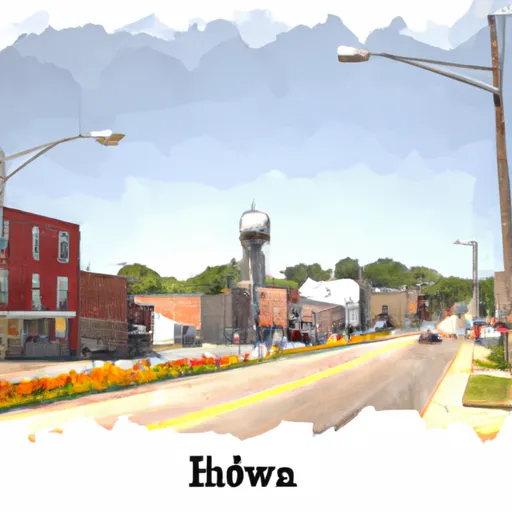°F
°F
mph
Windspeed
%
Humidity











Hubbard, Iowa is a small town located in Hardin County, in the heart of the Midwestern United States. The town experiences a humid continental climate, characterized by hot summers and cold winters. Average temperatures range from 20°F (-6°C) in winter to 85°F (29°C) in summer. Precipitation is evenly distributed throughout the year, with an annual average of 35 inches (89 cm). Hubbard is prone to occasional thunderstorms and tornadoes, common in the region.
Hydrologically, Hubbard is situated close to the Iowa River, which provides water for various recreational activities. Fishing enthusiasts can enjoy catching a variety of fish species, including catfish, bass, and walleye. The river also offers opportunities for boating and canoeing.
Outdoor recreation opportunities in Hubbard extend beyond fishing and water activities. The town is surrounded by picturesque nature, making it an ideal spot for hiking and exploring the local flora and fauna. Hardin County Conservation manages several parks and nature reserves nearby, such as Pine Lake State Park and Eldora City Park, which offer additional opportunities for camping, picnicking, and wildlife observation.
In summary, Hubbard, Iowa experiences a continental climate with distinct seasons, ample precipitation, and the potential for severe weather. Its proximity to the Iowa River provides opportunities for fishing and boating, while the surrounding natural areas offer outdoor enthusiasts various recreational activities like hiking and camping.
Weather Forecast
Hubbard receives approximately 875mm of rain per year, with humidity levels near 82% and air temperatures averaging around 9°C. Hubbard has a plant hardyness factor of 5, meaning plants and agriculture in this region thrive during a short period during spring and early summer. Most plants will die off during the colder winter months.
Regional Streamflow Levels
63
Cubic Feet Per Second
8
Cubic Feet Per Second
100
Cubic Feet Per Second
8
Cubic Feet Per Second
Nearby Camping
| Camping Area | Reservations | Toilets | Showers |
|---|---|---|---|
| Cleary Lake Regional Park | |||
| Herring Memorial Park - Brunswick | |||
| Carrollton City Park | |||
| Isanti County Fairgrounds | |||
| Ashton Wildwood Park | |||
| Van Meter State Park |



